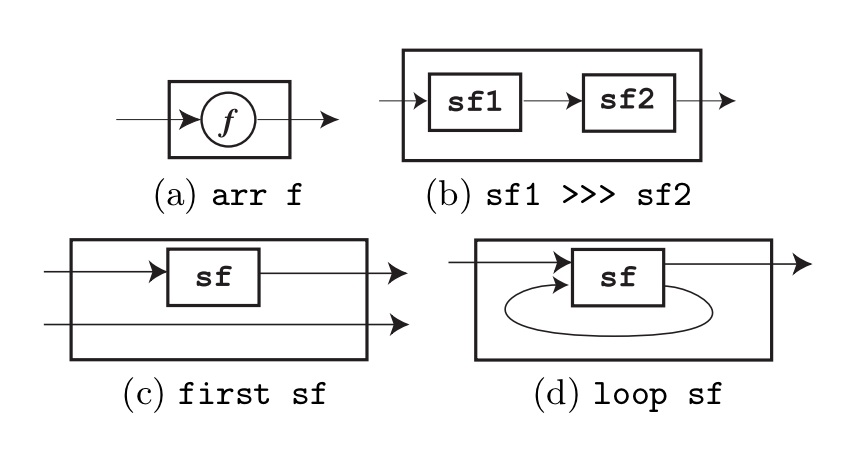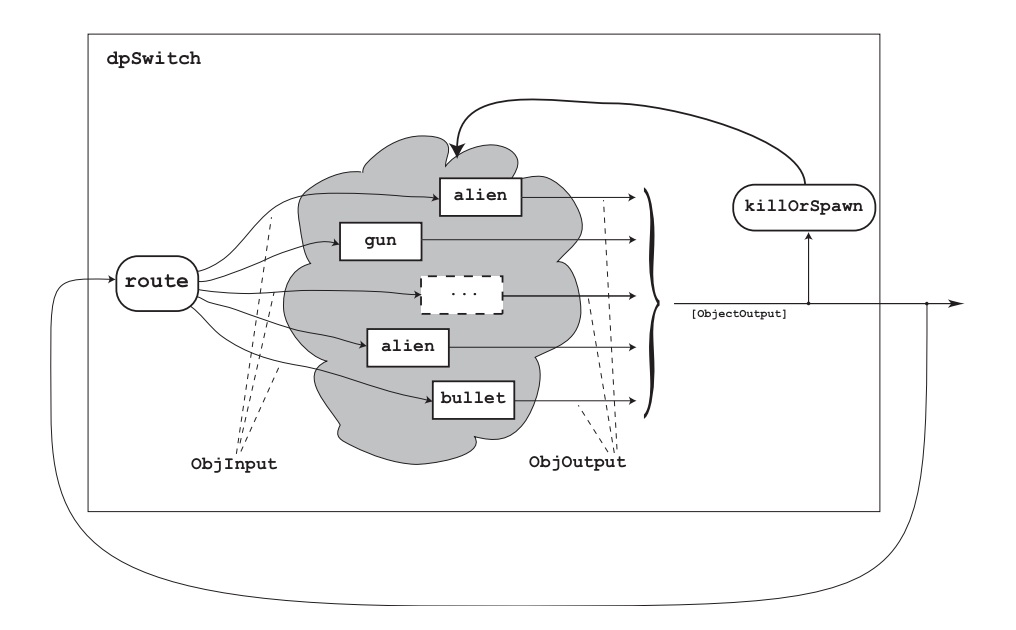Rapid, Scalable Game development using Functional Reactive Programming
Ray Shulang Lei
Ray Shulang Lei
int sum = 0;
for (int i = 0; i < 150; i++)
{
if (i % 5 == 0)
sum += i;
}
printf(sum);
show $ length [x | x <- [1..150], x `mod` 5 == 0]
GameLoop(
Players(), AIs(), Trees(), Guns(), Bullets(), ... )
gameState = [playerPosition, playerSpeed,
gamepadIO, playerIsColliding, ... ]
t = currentTime()
GameLoop(
Players(gameState, t), AIs(gameState, t),
Trees(gameState, t), Guns(gameState, t),
Bullets(gameState, t), ... )
Signal a = Time -> aA signal function is a function from Signal to Signal:
SF a b = Signal a -> Signal bYou can't touch the signals without using sigal functions.
 You can't touch the signal functions without using combinators.
You can't touch the signal functions without using combinators.
signal(position, speed, mouseXY)
-> PlayerFunction
-> signal(position, speed, mouseXY)
But what about gamepads buttons, collisions etc.?
An event is a type to represent discrete events such as a mouse click:
data Event a = NoEvent | Event a
signal(position, speed, mouseXY), event(gamepad, collision)
-> PlayerFunction
-> signal(position, speed, mouseXY)
But but but, what if my player dies? How do I remove and spawn?
Also, how does my object know if it is colliding with each other?
switch :: SF a (b, Event c) ->
(c -> SF a b) -> SF a b
What is this non-sense? What are these strange symbols stand for?
It's haskell...I know. It says a switch will take an activated signal function with a trigger event, and another signal function as input. If the trigger event occurs, it applies the second signal function, else it applies the original signal function.

Q:What framework can I start to use FRP for game dev?
A:My presentation is based on the Yampa framework in Haskell
Q:How well is this method perform?
A:Paul Hudak made a game "PaddleBall" with 17 lines of code in FAL
Q:Is there example of complex game out there made with FRP?
A:Check out Frag, a first personal shooter game